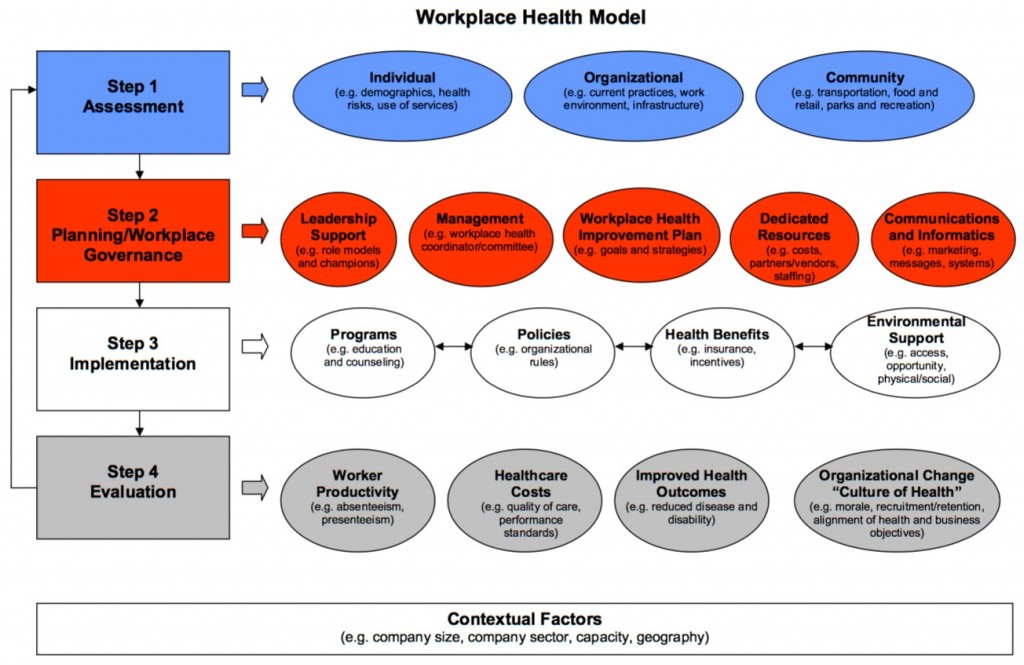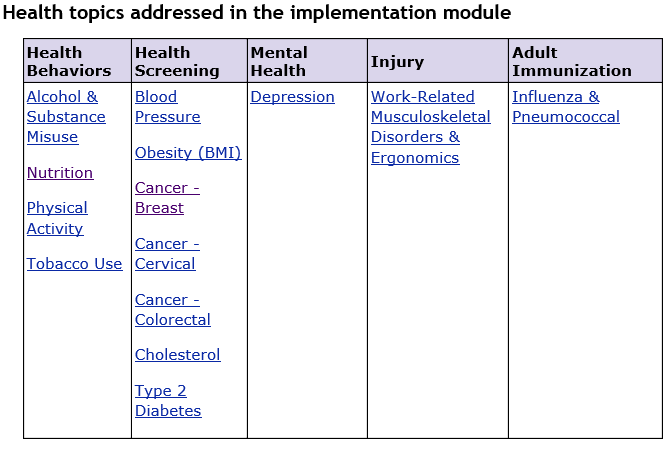It Takes a Village
Workplace Health -> FrameworkFramework
The Centers for Disease Control and Prevention (CDC) clarifies that workplace health is not only about the health of individual employees, but rather of the organization as well. A workplace wellness program should address four organizational levels:
- Individual – the employee’s lifestyle and current health status
- Interpersonal – the employee’s social network, including relationships with managers, coworkers, and family that provide support, mentoring or role models
- Organizational – the workplace structure, culture, practices and policies, such as health benefits, health promotion programs, work organization and leadership support
- Environmental – the physical workspace, such as facilities and settings where employees work, and access to health promotion opportunities in the surrounding community where employees live
“To do this the right way, employers must address both the individual risk factors affecting their employees and the organizational factors that help or hinder employees’ efforts to reduce their risks and get healthier. The strongest workplace wellness programs are building a culture of health that interweaves individual health needs with the overall company goals and are backed by senior leadership.” –Ron Goetzel, Senior Scientist and Director, Johns Hopkins’ Institute for Health and Productivity Studies, (Quoted here)
Workplace Health Model
The CDC emphasizes the importance of building a workplace health program in a coordinated, systematic and comprehensive way. A systematic approach to the program should include the following four steps, which are expanded upon in the diagram below:
- An assessment to identify employee health risks and concerns, and to describe current health promotion activities as well as capacity and needs.
- A planning process to identify an organization’s goals, select interventions, build an organizational infrastructure, and garner leadership support for employee health.
- Program implementation of the steps needed to put the strategies into place.
- An evaluation to determine whether the program was successful – i.e. it increased employee productivity, decreased healthcare costs, and improved employee health status.

Source: CDC Workplace Health Promotion, Workplace Health Model.
The CDC offers extensive strategies and resources in their implementation module on how to address numerous health topics (see diagram).

